From the Fall 2022 issue of the Isa Informer
Artificial insemination: a natural winner
By Lorenzo Lasater, President
One of the most valuable genetic tools available to ranchers is artificial insemination, or A.I. In fact, there are so many benefits, using A.I. is a natural choice, even in a commercial operation. For example, A.I. allows the use of the very top genetics, it groups the calves closer in age and front-loads the calving period, and it means fewer bulls have to be turned out.
In addition to these advantages, A.I. enables an operator to multiply the influence of a top sire—beyond what that bull could contribute naturally, and maybe best of all, operators gain more predicable genetic movement using higher-accuracy EPDs.
At Isa Beefmasters, we have been incorporating A.I. into our herd planning for decades. Dad first learned the technique in 1964 at the Graham School in Garnett, Kansas. He began using A.I. in our registered herd in Mexico in 1965. This year marks 57 years of continuous use of this incredible technology!
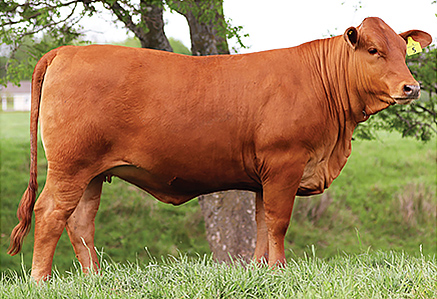 Thisbeautiful A.I. daughter of L Bar Momentum recently sold for a premium at the Red River Performance Group Heifer Sale.
Thisbeautiful A.I. daughter of L Bar Momentum recently sold for a premium at the Red River Performance Group Heifer Sale.To quantify our R.O.I. on A.I., I did a little analysis on two groups of cattle, recently sold, in which Isa Beefmasters was involved.
The first sale occurred at the Red River Performance Group Heifer Sale held May 21, 2022. We were pleased to consign three L Bar heifers to the sale, which featured 76 excellent quality, performance-tested open heifers. The sale averaged $3567, a tremendous price for that number of open heifers. The high seller brought only $7300, making this an honest average.
In a previous article published in the Fall 2020 Isa Informer, I estimated that it costs around $82 to A.I. a registered cow, including semen. In this case, that was $82 well spent, yielding a net gain of $116 on the heifers on the sale. L Bar-sired heifers fared even better, netting an additional $494 over the sale average after the cost of the A.I.
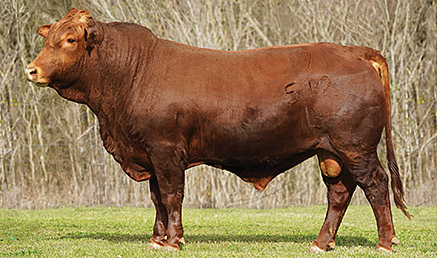 LBarMomentum brings extremely balanced EPD power to his progeny. A.I. allows any-sized operator to harness the same genetic power that large seedstock producers use.
LBarMomentum brings extremely balanced EPD power to his progeny. A.I. allows any-sized operator to harness the same genetic power that large seedstock producers use.I want to congratulate the Red River Group on their “Genetic Partnership,” in which they have partnered with breeders who have semen sires they believe will help the program and have made the semen available at a discounted price to their members. Isa Beefmasters is proud to have L Bar En Fuego and L Bar Momentum included in the partnership. Red River encourages their members to A.I., which in turn improves the quality and consistency of the bulls and heifers sold. That value extends to their own replacement heifers, with the accuracy and quality of their herd EPDs increasing rapidly. To learn more about the program, visit: www.redriverbeefmastersale.com

We experience a similar financial boost in our own annual bull sale. At Isa Beefmasters, all our cattle are generically named L Bar plus a 4-digit number (e.g., L Bar 2104). We only name the semen sires, so they are easily identifiable. Though most of the bulls we sell each fall go into commercial operations, the buyers recognize the additional value and predictability of those A.I.-sired bulls and will pay more for them.
The chart at right details our 2021 bull sale results. You can see a $484-per-head advantage for the A.I.-sired calves, which is a welcome boost to the bottom line.
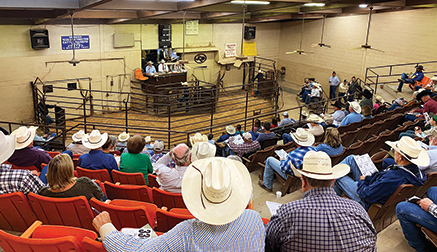 Bullbuyers recognize the value of A.I.-sired bulls and are willing to pay more to gain the genetic insights and predictability that A.I. offers.
Bullbuyers recognize the value of A.I.-sired bulls and are willing to pay more to gain the genetic insights and predictability that A.I. offers.Producers often cite cost, labor and facilities as the usual reasons why they do not use A.I. I will admit that it is a bit labor intensive, with most protocols requiring three or four trips down the chute. But the rewards far outweigh the work, and you will likely be working them at least once pre-breeding anyway. At $82 per head, the cost is manageable, especially when you crunch the numbers.
A.I. is a tremendous tool for making faster genetic progress in any operation that is willing to put in the extra effort. You will be able to use superior genetics, tighten your calving window, increase your pregnancy rates and reduce your bull needs. It is not without some extra labor and expense, but it really is a winning strategy that more than pays for itself and yields many important benefits. In these two examples, you can see how the effort was well rewarded, adding significant value the final product—a financial boost I will gladly pocket any year.

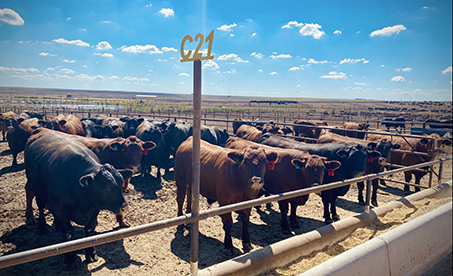 Steers at Nextgen Cattle Feeding, KS.
Steers at Nextgen Cattle Feeding, KS.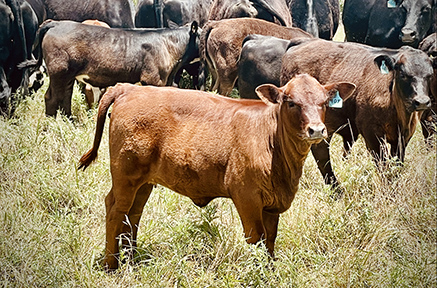
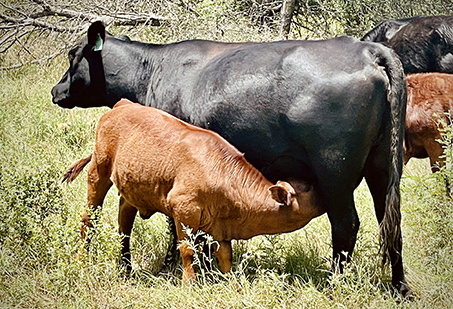
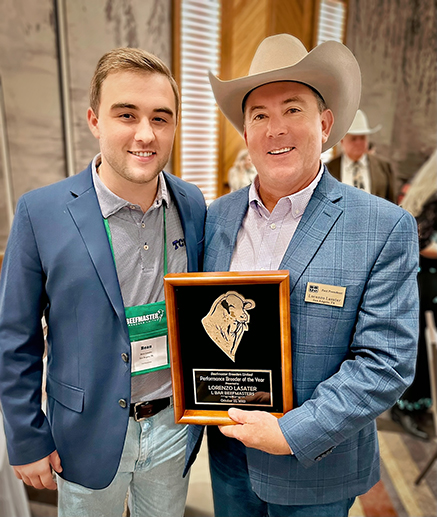
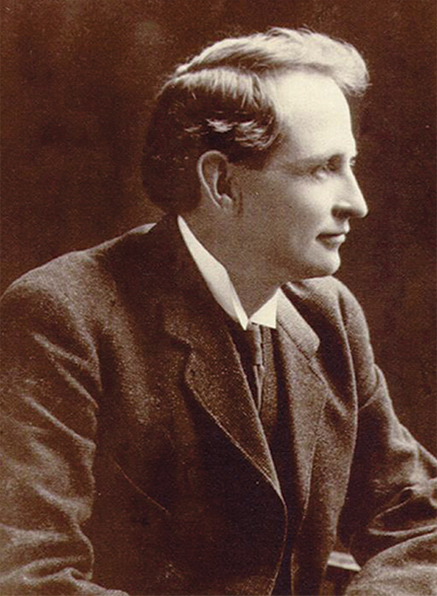 Ed C. Lasater first registered the L Bar brand in 1892 in South Texas.
Ed C. Lasater first registered the L Bar brand in 1892 in South Texas.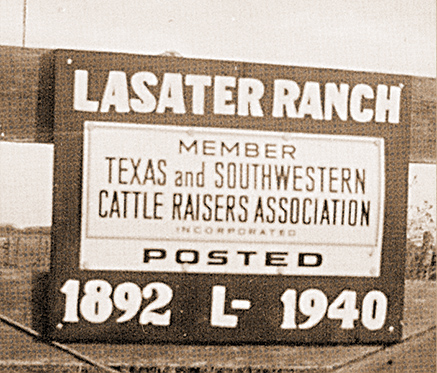 The Lasater ranch sign near Falfurrias, Texas.
The Lasater ranch sign near Falfurrias, Texas.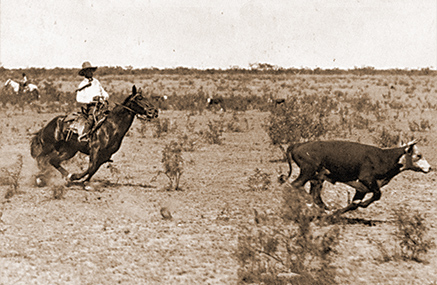 Tom Lasater, youngest son of Ed C. Lasater, returned home after his father’s death in 1930 to try to save the family ranch and cattle.
Tom Lasater, youngest son of Ed C. Lasater, returned home after his father’s death in 1930 to try to save the family ranch and cattle.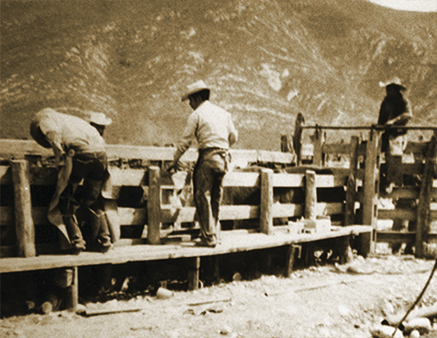 Laurie (far left) vaccinates cattle on Rancho Santa Cruz near Múzquiz, Coahuila, Mexico. c. 1967
Laurie (far left) vaccinates cattle on Rancho Santa Cruz near Múzquiz, Coahuila, Mexico. c. 1967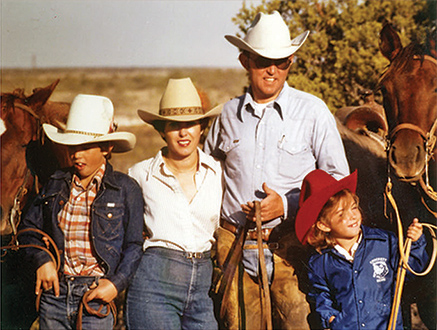 Lorenzo, Annette, Laurie and Isabel after a roundup near Mertzon, Texas. c. 1978
Lorenzo, Annette, Laurie and Isabel after a roundup near Mertzon, Texas. c. 1978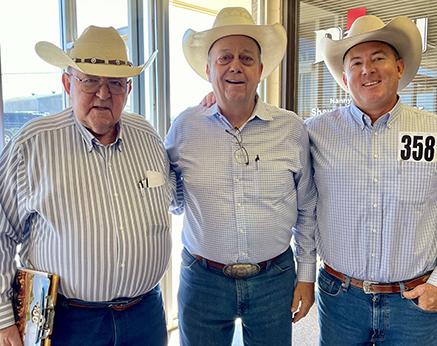 Laurie (left) and Lorenzo Lasater (right) with Danny Major, who bought the high-selling bull in the sale, L Bar 0501.
Laurie (left) and Lorenzo Lasater (right) with Danny Major, who bought the high-selling bull in the sale, L Bar 0501.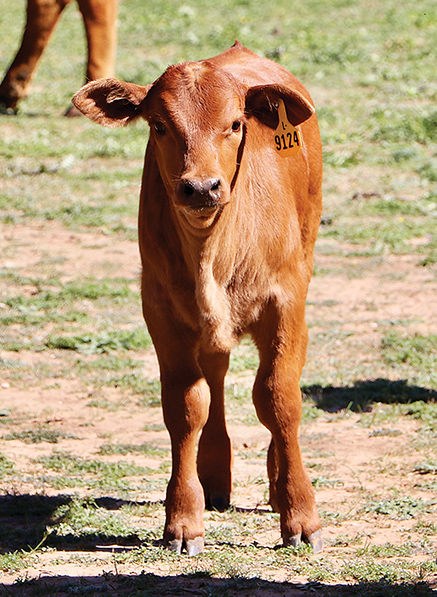 The ripples of a bull’s impact on the herd, whether good or bad, will continue for almost 20 years.
The ripples of a bull’s impact on the herd, whether good or bad, will continue for almost 20 years.
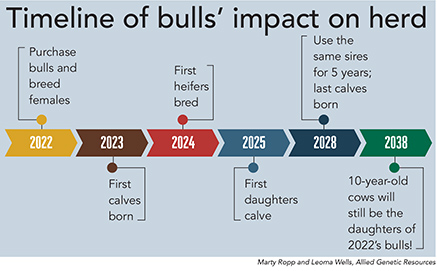
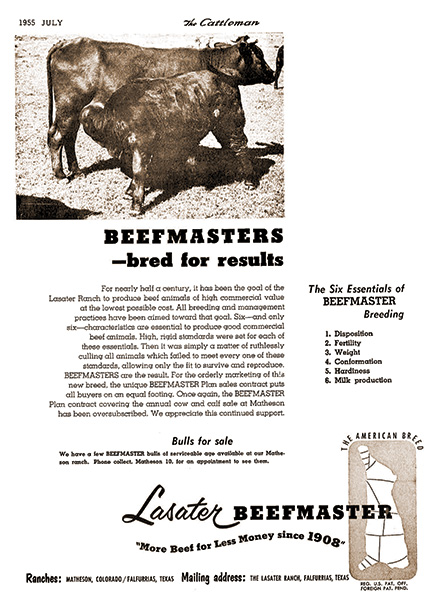 1955 ad from The Cattleman magazine.
1955 ad from The Cattleman magazine.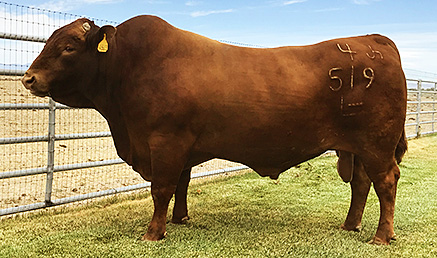 Semenbull L Bar 4519’s dam, L Bar 1417, was a Pacesetter that also raised another herd sire plus two top embryo donors. The value of her genetic impact is immense.
Semenbull L Bar 4519’s dam, L Bar 1417, was a Pacesetter that also raised another herd sire plus two top embryo donors. The value of her genetic impact is immense.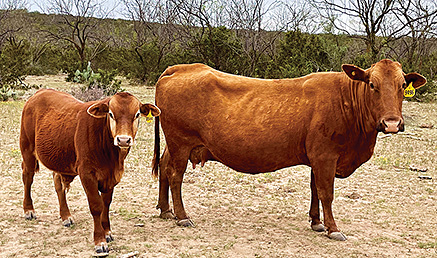 LBar9496, who weaned this outstanding bull as her 10th calf this spring, exemplifies the fertility and longevity honed through years of population genetics.
LBar9496, who weaned this outstanding bull as her 10th calf this spring, exemplifies the fertility and longevity honed through years of population genetics.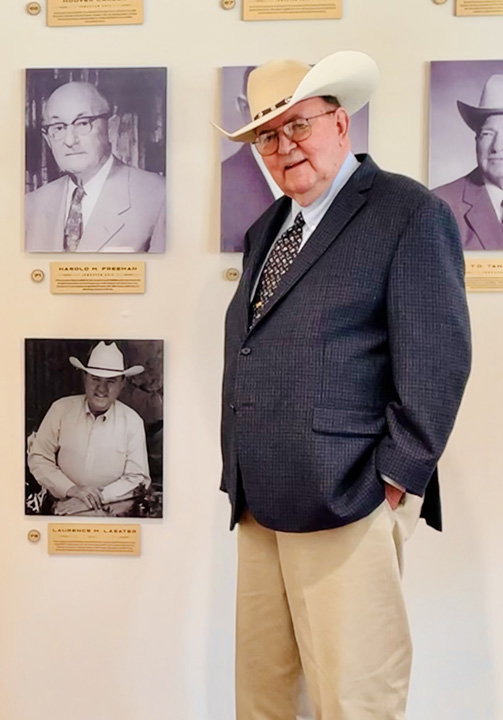
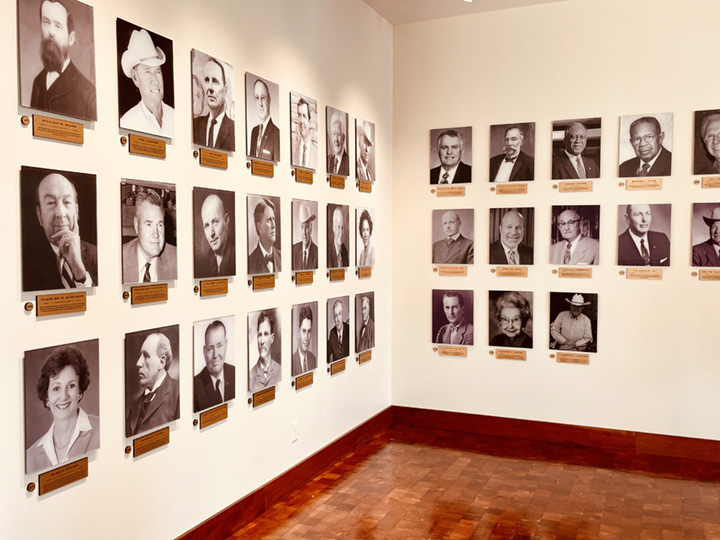
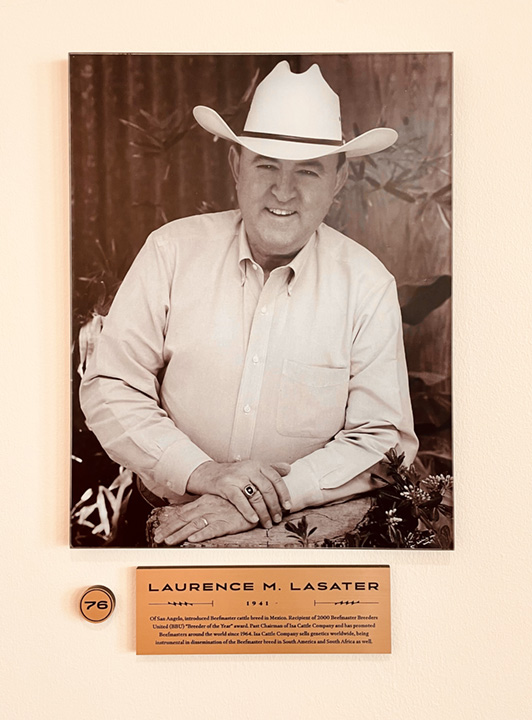
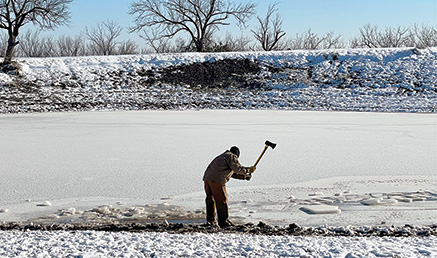
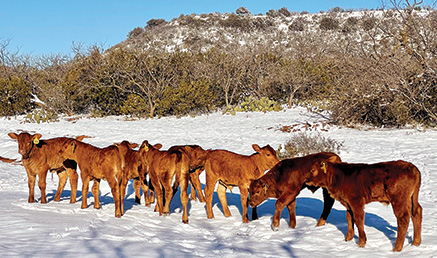
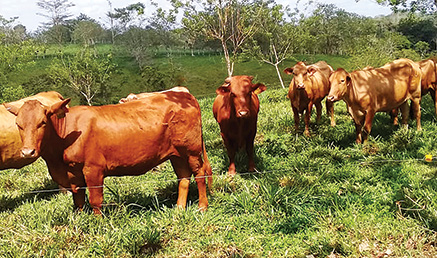

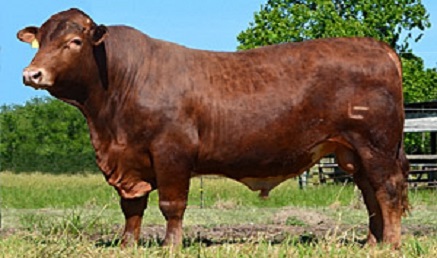 L Bar En Fuego is a real game-changer.
L Bar En Fuego is a real game-changer.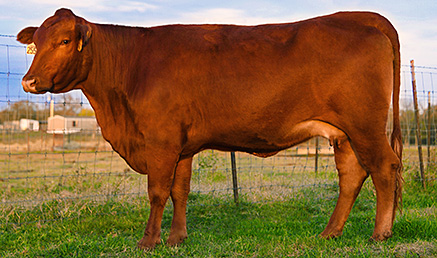 Donor cow L Bar 3404
Donor cow L Bar 3404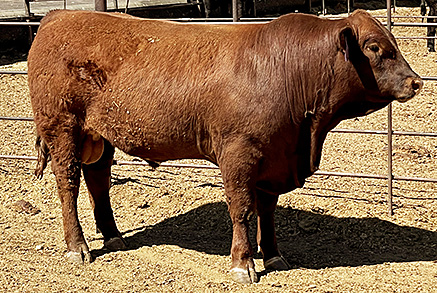
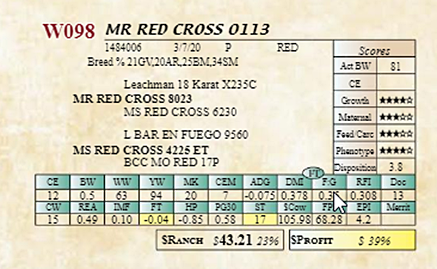
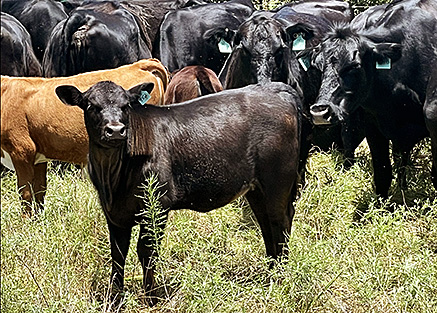
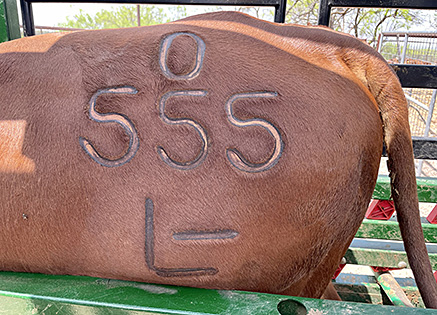
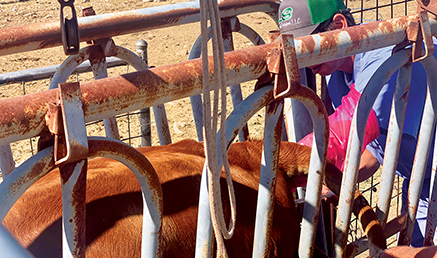 Although the labor cost is a significant component in A.I., having someone experienced handling the procedure pays off with higher conception rates.
Although the labor cost is a significant component in A.I., having someone experienced handling the procedure pays off with higher conception rates.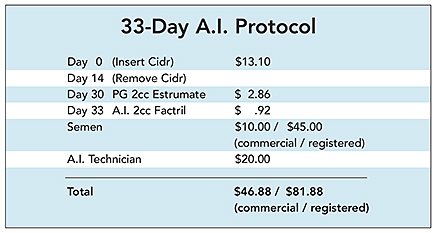
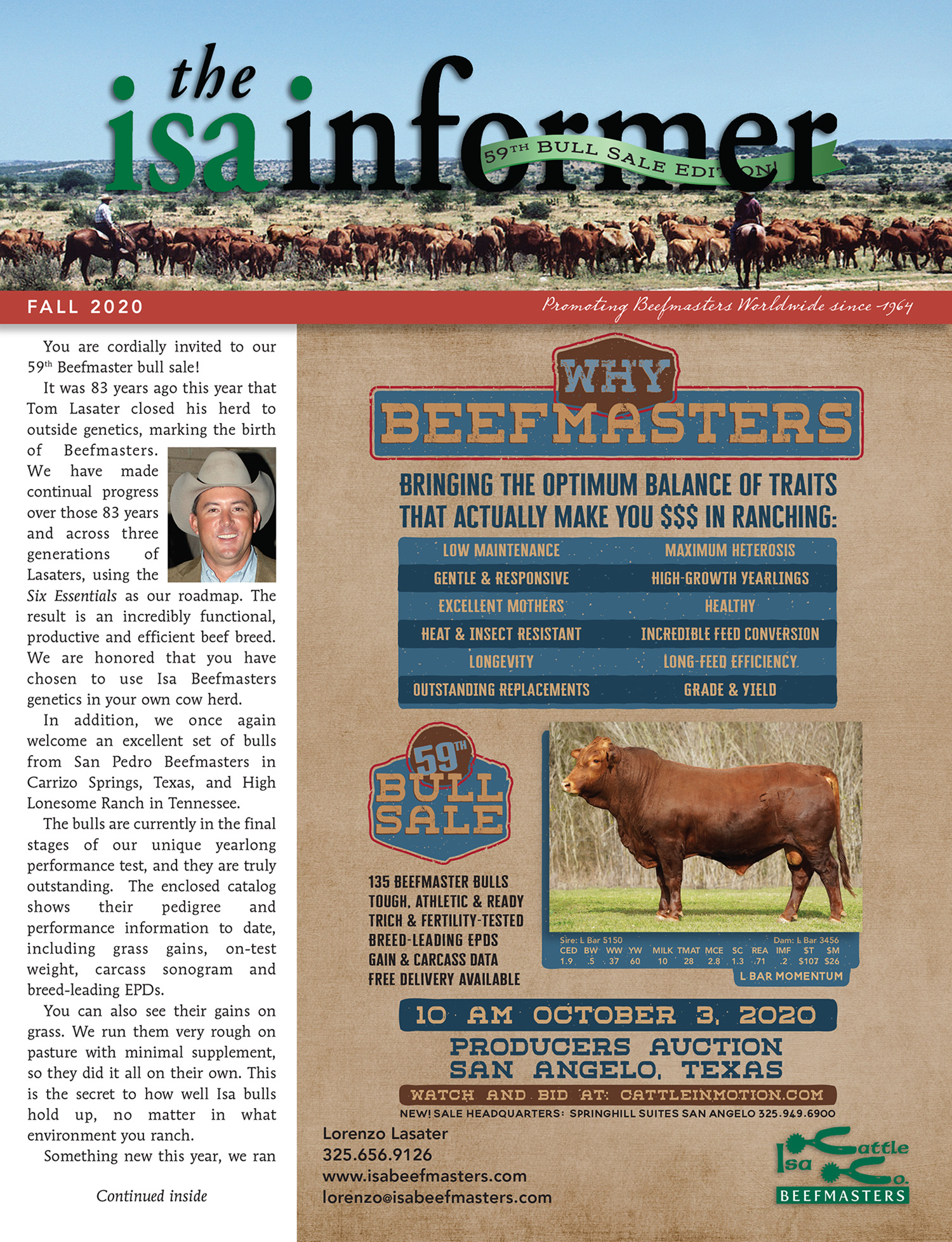
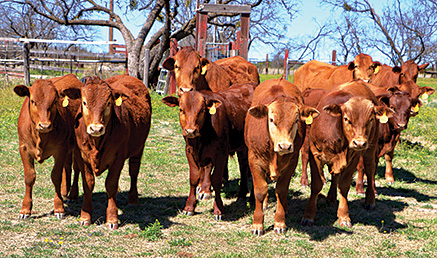 Sixty-day breeding seasons ensure every cow can produce a calf annually. In addition, calves are tightly grouped with their peers, making performance evalutions that much easier.
Sixty-day breeding seasons ensure every cow can produce a calf annually. In addition, calves are tightly grouped with their peers, making performance evalutions that much easier.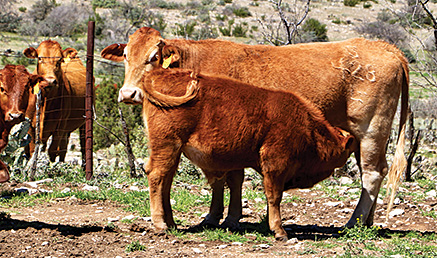 What good are outrageous weaning weights if you spend a fortune to achieve them? We prefer low-cost weaning weights achieved the old-fashioned way. A cow weaning a quality calf in rough, native pastures exemplifies accountability.
What good are outrageous weaning weights if you spend a fortune to achieve them? We prefer low-cost weaning weights achieved the old-fashioned way. A cow weaning a quality calf in rough, native pastures exemplifies accountability.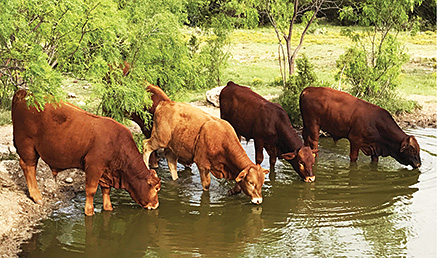 We breed our cattle in multiple-sire herds, just like our customers’ commercial beef operations. This competition allows us to identify dominant breeders and propagate their fertile genetics.
We breed our cattle in multiple-sire herds, just like our customers’ commercial beef operations. This competition allows us to identify dominant breeders and propagate their fertile genetics.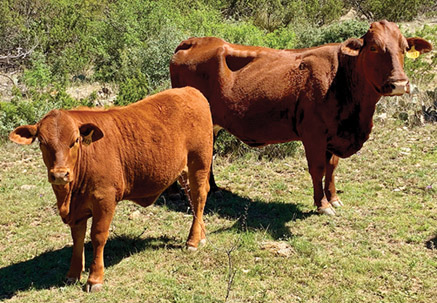 Sixteen-year-old L Bar 3951 is the oldest cow in our fall-calving herd and raising this terrific heifer calf—her 15th.
Sixteen-year-old L Bar 3951 is the oldest cow in our fall-calving herd and raising this terrific heifer calf—her 15th.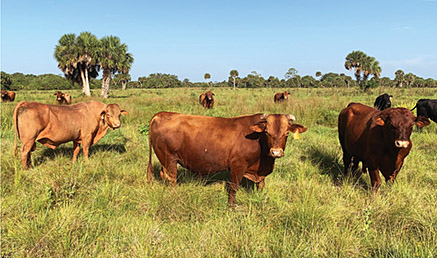 These L Bar bulls are just out of heavy service in south Florida. The yellow bull (left) is 12 years old. Our customer calls him “Moneymaker.”
These L Bar bulls are just out of heavy service in south Florida. The yellow bull (left) is 12 years old. Our customer calls him “Moneymaker.”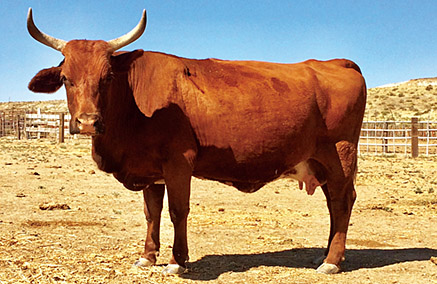 Pregnant 16-year-old NV Beefmaster cow that has raised 15 calves is definitely a “Moneymaker.”
Pregnant 16-year-old NV Beefmaster cow that has raised 15 calves is definitely a “Moneymaker.”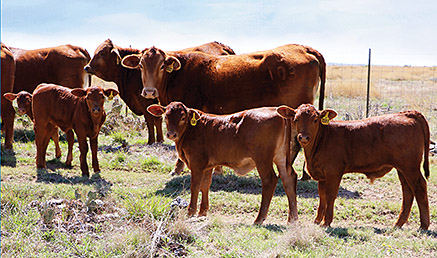
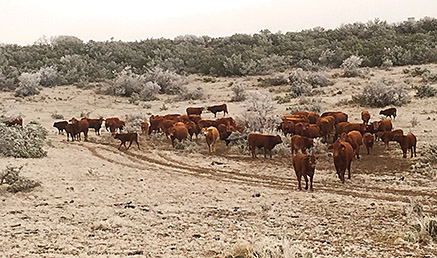
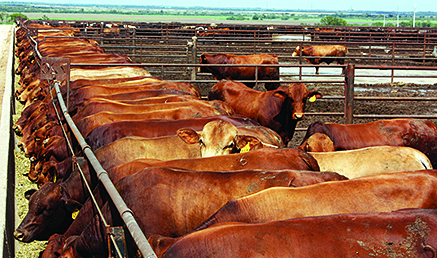
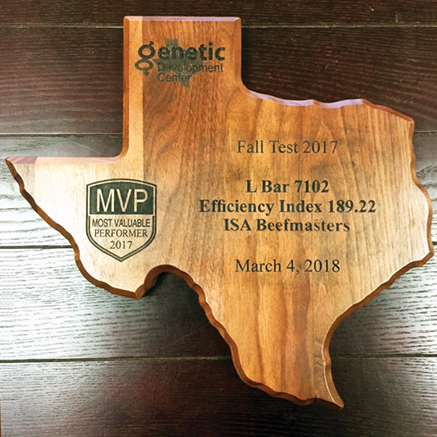





 Translate
Translate